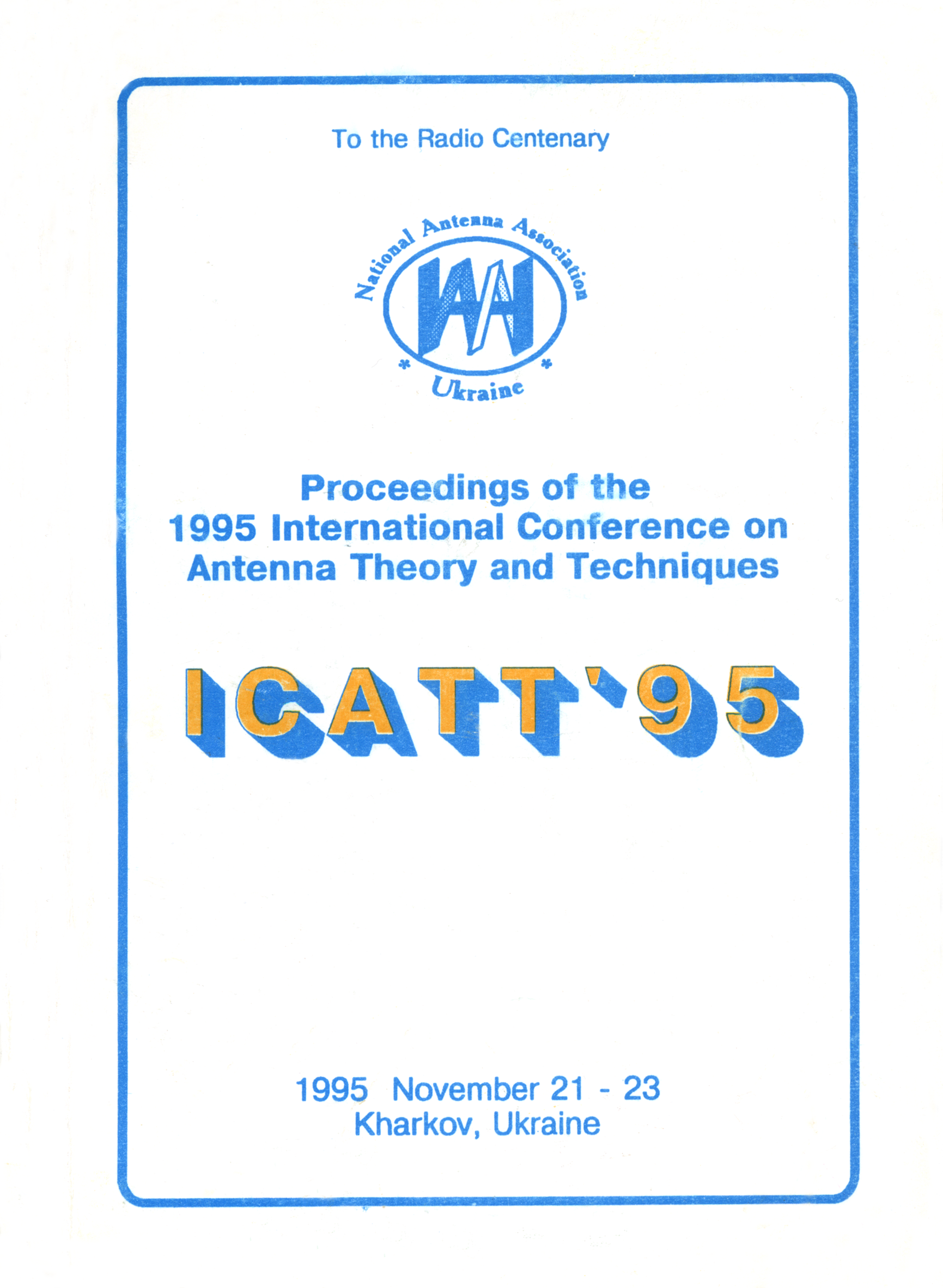Analysis of destabilizing factors effect on hybrid reflector antenna radiation
DOI:
https://doi.org/10.1109/ICATT.1995.1234145Abstract
The paper deals with the effect of various destabilizing factors including manufacture inaccuracy on a hybrid reflector antenna (HRA) radiation pattern. Antenna designed for the airport precision approach radar (PAR) is considered as an example of HRA. Antenna uses a reflector 2.8*3.3 m cut of hyperboloid and an offset cylindrical phased array containing about seven hundred transmission-type waveguide phase shifters. The array is fed by a monopulse four-waveguide horn and is operated by a steering algorithm realizing off axis scan. The illuminated spot ~1.4*2.6 m moves across the reflector surface as a function of scan. HRA forms antenna pattern (AP) with 1.4° horizontal and 0.8° vertical halfpower beamwidth. First sidelobes level is about -20 dB through most of the scan sector ~18*14°.
HRA simulation model concept and it’s PC program realization are presented and discussed. The model is based on object-oriented design principles and both Geometrical Optics approximation and Physical Optics approach. Spatial AP is calculated by the current method.
Earlier the model was used to investigate a plane wave conversion following it's reflection from hyperboloid at an arbitrary spatial angle of incidence. Corresponding caustic surface were determined. It is known from HRA theory that array must be located in the single-ray zone, i.e. beyond the caustic surface, so their determination is necessary for HRA geometry optimization.
Now the model is used to analyze the effect of relatively small HRA radiation characteristics - main beam direction, half-power beamwidth, sidelobes level. The effect of array elements random phase errors is also analyzed. The calculation results were used in PAR antenna system design.

